#anime north 2019
Explore tagged Tumblr posts
Text

SUMMARY: Two lighthouse keepers try to maintain their sanity while living on a remote and mysterious New England island in the 1890s.
Sorry to use this gif again, but the mod feels it is particularly relevant to this movie:

#the lighthouse (2019)#psychological horror#cosmic horror#lgbtq#2010s#united states#canada#north american movie#mentionable warning#animal death#horror#movie#poll#mod rec
255 notes
·
View notes
Text





























Feast of the Ass Day
The Feast of the Ass on January 14 began as a medieval Christian feast, and commemorates the Israelites’ flight into Egypt. It was predominantly observed in France as a variant of the Feast of Fools, which commemorated biblical donkey-related narratives, particularly the donkey that carried the Holy Family into Egypt following Jesus’ birth.
History of Feast of the Ass Day
This feast may be a Christian adaptation of the pagan feast, Cervulus, and incorporating the Nativity story’s donkey. It was first held in the 1000s and celebrated various Bible stories. Additionally, it had a pseudo-Augustinian influence credited to the ‘Sermo contra Judaeos.’
After the Catholic Church publicly condemned the celebration in the second half of the 15th century, it became less popular. The Feast of Fools was also condemned during this period. Both feasts were thought to be improper, albeit the Feast of Fools was regarded as such far more than the Feast of the Ass.
The Feast of the Ass honors all of the Bible’s donkeys, particularly the one thought to have transported Jesus and his family to Egypt following his birth. The family was escaping Herod the Great’s assassination of young boys at the time. The donkey that Jesus rode into Jerusalem on Palm Sunday is another biblical account of a donkey. A donkey is also said to have been present in the manger where Jesus was born.
A girl would ride a donkey through a town to a church on the day. As she rode through the streets, people would sing a song about her carrying a baby or being pregnant herself. Once the donkey reached the church, it was given food and water and stood near the altar for the service. The crowd would bray back to the priest, and the priest would occasionally bray as well. The Feast of the Ass was especially rowdy in the city of Beauvais in northern France.
Feast of the Ass Day timeline
4600–4000 B.C. The First Record of Domesticated Donkeys
In Egypt, donkeys are domesticated for the first time.
1000s The First Feast of the Ass Day
The first Feast of the Ass celebration is held.
1450s The Observance is Banned
The Feast of the Ass and the Feast of Fools’ celebrations cease because the Catholic Church denounces them.
1929 Miniature Donkeys Enter the United States
Miniature donkeys make their first appearance in the United States.
Feast of the Ass Day FAQs
What kind of donkey did Jesus ride?
A Nubian donkey. The Nubian donkey wears a cross on its back because it is believed that on Palm Sunday, this breed of donkeys brought Jesus to Jerusalem.
What does a donkey signify spiritually?
In ancient cultures, donkeys had a special symbolic and spiritual importance. Nevertheless, their link with Christ in the New Testament has led to them being viewed as a symbol of human suffering and our salvation hopes.
What characteristics do donkeys possess?
Donkeys, unlike horses, are not easily scared and have a great sense of curiosity. Donkeys are known for their defiance, however, this stems from their highly advanced sense of self-preservation.
How to Celebrate Feast of the Ass Day
Ride a donkey
Read up on the holiday’s history
Play donkey-themed games
On the off chance that you own one, why not take a ride to celebrate Feast of the Ass Day. Alternatively, you can visit the zoo to see one in the flesh.
Grab a Bible and learn about the story for yourself. Read the “Flight to Egypt” and surprise your friends with all the new information you’ve learned.
There’s no reason you can’t have fun while celebrating. You can host donkey-themed games, such as “Pin the Tail on the Donkey.”
5 Facts About Donkeys That Will Blow Your Mind
Few and then far between
Efficient beasts
Going the distance
Excellent vision
Powerful competition
Donkeys can significantly differ in size; they can be a mere 26-inches or as tall as 68-inches.
A donkey’s digestive system utilizes over 95% of what they consume.
In the desert, a donkey's bray carries about 60 miles.
Donkeys have the ability to see all four of their feet at once.
A donkey is more powerful than a horse of similar size.
Why We Love Feast of the Ass Day
We learn more about them
We’re animal lovers
Moving in high company
We get to learn more about donkeys and the role they played in popular Bible stories. Donkeys have an interesting history and we use this holiday to appreciate their versatility.
We love animals of all kinds. They make the world a more beautiful place to live in.
Donkeys were the transport mode of choice for the Messiah. That has to count for something, right?
Source
#Feast of the Ass#FeastOfTheAss#14 January#wildlife#animal#travel#begging burros#donkey#Custer State Park#I love Custer State Park#vacation#USA#summer 2019#2014#wildflower#original photography#South Dakota#North Central USA#Black Hills#Arizona#Southwestern USA#architecture#cityscape#small town#tourist attraction#landmark#big sky country#Oatman#landscape
2 notes
·
View notes
Text
all the fake tweets and ship edits for jjk and opla on my fyp...
#im getting scared#i've seen this before#with haikyuu in 2019#and then immediately after#2020 anime tiktok#the north remembers
2 notes
·
View notes
Photo

Me and @usausagiren will be at Anime North 2023 in the Artist Alley at table D16!!
We also goofed so only my name is in the convention guidebook 💦
I'll also be one of the participating artists in the Holostars Stamp Rally! Check out lumierelapins on twitter for how to play and the map!
#tabling#anime north#anime north 2023#first time tabling since 2019#hope everything goes well and we get back in the swing of things
4 notes
·
View notes
Text
'Whisper Me a Love Song' Yuri Anime Now Streaming
The first episode of Cloud Hearts and Yokohama Animation Laboratory's high school Yuri romance anime Whisper Me a Love Song (Sasayaku You ni Koi o Utau) is now streaming in North America on HIDIVE. The first episode premiered on April 13, and new episodes are simulcast every Saturday at 12:30 PM EST.
youtube
Whisper Me a Love Song follows first-year high school student Himari Kino, who, at a welcome ceremony, witnesses Yori Asanagi singing and instantly falls in “love.” She immediately confesses her admiration to Yori, who misinterprets Himari’s feelings as romantic. However, once she realizes her mistake, Yori swears that she will make Himari fall for her for real. The anime will run for 12 episodes, according to HIDIVE.

The anime is based on the manga of the same name by Eku Takeshima. The manga began serialization in Comic Yuri Hime in February 2019. As of March 2024, Ichjinsha has published nine collected volumes of the series in Japanese, and Kodansha USA has published eight in English.

The anime, which was delayed from its initially announced January premiere, is directed by Akira Mano at Cloud Hearts and Yokohama Animation Laboratory. Mano replaced the initially announced director, Xin Ya Cai, due to “health reasons.” Additional staff includes character designer Minami Yoshida and script supervisor Hiroki Uchida join Mano.
The anime stars Hana Shimano as Himari Kino and Asami Seto as Yori Asanagi. Additional cast includes:
Konomi Kohara as Mari Tsutsui
Mikako Komatsu as Aki Mizuguchi
Ai Kakuma as Kaori Tachibana
Yuna Nemoto as Shiho Izumi
Reina Ueda as Momoka Satomiya
Chika Anzai as Hajime Amasawa
Aoi Koga as Miki Mizuguchi
You can stream Whisper Me a Love Song today with English subtitles on HIDIVE in North America, the British Isles, and Australia.
210 notes
·
View notes
Text
Humans infecting animals infecting humans − from COVID-19 to bird flu, preventing pandemics requires protecting all species - Published Sept 4, 2024
I remember back in 2022, someone mocked me for worrying about zoonosis of new coivd strains. The science backs up my thoughts once again: We have to protect *everyone,* even critters, from disease to prevent future pandemics.
Authors Anna Fagre Veterinary Microbiologist and Wildlife Epidemiologist, Colorado State University
Sadie Jane Ryan Professor of Medical Geography, University of Florida
When the World Health Organization declared COVID-19 a pandemic on March 11, 2020, humans had been the only species with reported cases of the disease. While early genetic analyses pointed to horseshoe bats as the evolutionary hosts of SARS-CoV-2, the virus that causes COVID-19, no reports had yet surfaced indicating it could be transmitted from humans to other animal species.
Less than two weeks later, a report from Belgium marked the first infection in a domestic cat – presumably by its owner. Summer 2020 saw news of COVID-19 outbreaks and subsequent cullings in mink farms across Europe and fears of similar calls for culling in North America. Humans and other animals on and around mink farms tested positive, raising questions about the potential for a secondary wildlife reservoir of COVID-19. That is, the virus could infect and establish a transmission cycle in a different species than the one in which it originated.
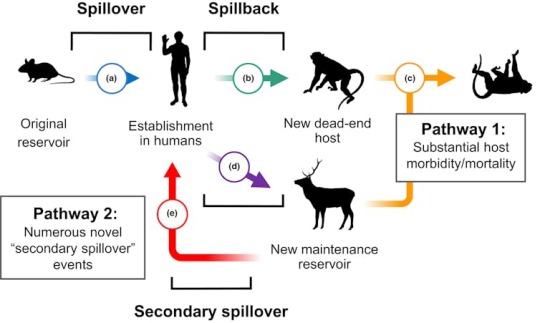
For example, spillback has been a long-standing threat to endangered great apes, even among populations with infrequent human contact. The chimpanzees of Gombe National Park, made famous by Jane Goodall’s work, have suffered outbreaks of measles and other respiratory diseases likely resulting from environmental persistence of pathogens spread by people living nearby or by ecotourists.
We are researchers who study the mechanisms driving cross-species disease transmission and how disease affects both wildlife conservation and people. Emerging outbreaks have underscored the importance of understanding how threats to wildlife health shape the emergence and spread of zoonotic pathogens. Our research suggests that looking at historical outbreaks can help predict and prevent the next pandemic.
Spillback has happened before Our research group wanted to assess how often spillback had been reported in the years leading up to the COVID-19 pandemic. A retrospective analysis not only allows us to identify specific trends or barriers in reporting spillback events but also helps us understand where new emergent threats are most likely.
We examined historical spillback events involving different groups of pathogens across the animal kingdom, accounting for variations in geography, methods and sample sizes. We synthesized scientific reports of spillback across nearly a century prior to the COVID-19 pandemic – from the 1920s to 2019 – which included diseases ranging from salmonella and intestinal parasites to human tuberculosis, influenza and polio.
We were also interested in determining whether detection and reporting bias might influence what’s known about human-to-animal pathogen transmission. Charismatic megafauna – often defined as larger mammals such as pandas, gorillas, elephants and whales that evoke emotion in people – tend to be overrepresented in wildlife epidemiology and conservation efforts. They receive more public attention and funding than smaller and less visible species.
Complicating this further are difficulties in monitoring wild populations of small animals, as they decompose quickly and are frequently scavenged by larger animals. This drastically reduces the time window during which researchers can investigate outbreaks and collect samples.
The results of our historical analysis support our suspicions that most reports described outbreaks in large charismatic megafauna. Many were captive, such as in zoos or rehabilitation centers, or semi-captive, such as well-studied great apes.
Despite the litany of papers published on new pathogens discovered in bats and rodents, the number of studies examining pathogens transmitted from humans to these animals was scant. However, small mammals occupying diverse ecological niches, including animals that live near human dwellings – such as deer mice, rats and skunks – may be more likely to not only share their pathogens with people but also to be infected by human pathogens.
COVID-19 and pandemic flu In our historical analysis of spillback prior to the COVID-19 pandemic, the only evidence we found supporting the establishment of a human pathogen in a wildlife population were two 2019 reports describing H1N1 infection in striped skunks. Like coronaviruses, influenza A viruses such as H1N1 are adept at switching hosts and can infect a broad range of species.
Unlike coronaviruses, however, their widespread transmission is facilitated by migratory waterfowl such as ducks and geese. Exactly how these skunks became infected with H1N1 and for how long remains unclear.
Shortly after we completed the analysis for our study, reports describing widespread COVID-19 infection of white-tailed deer throughout North America began surfacing in November 2021. In some areas, the prevalence of infection was as high as 80% despite little evidence of sickness in the deer.
This ubiquitous mammal has effectively become a secondary reservoir of COVID-19 in North America. Further, genetic evidence suggests that SARS-CoV-2 evolves three times faster in white-tailed deer than in humans, potentially increasing the risk of seeding new variants into humans and other animals. There is already evidence of deer-to-human transmission of a previously unseen variant of COVID-19.
There are over 30 million white-tailed deer in North America, many in agricultural and suburban areas. Surveillance efforts to monitor viral evolution in white-tailed deer can help identify emerging variants and further transmission from deer populations into people or domestic animals.
Investigations into related species revealed that the risk of spillback varies. For instance, white-tailed deer and mule deer are highly susceptible to COVID-19 in the lab, while elk are not.
H5N1 and the US dairy herd Since 2022, the spread of H5N1 has affected a broad range of avian and mammalian species around the globe – foxes, skunks, raccoons, opossums, polar bears, coyotes and seals, to name a few. Some of these populations are threatened or endangered, and aggressive surveillance efforts to monitor viral spread are ongoing.
Earlier this year, the U.S. Department of Agriculture reported the presence of H5N1 in the milk of dairy cows. Genetic analyses point to an introduction of the virus into cows as early as December 2023, probably in the Texas Panhandle. Since then, it has affected 178 livestock herds in 13 states as of August 2024.
How the virus got into dairy cow populations remains undetermined, but it was likely by migratory waterfowl infected with the virus. Efforts to delineate exactly how the virus moves among and between herds are underway, though it appears contaminated milking equipment rather than aerosol transmission, may be the culprit.
Given the ability of influenza A viruses such as avian flu to infect a broad range of species, it is critical that surveillance efforts target not only dairy cows but also animals living on or around affected farms. Monitoring high-risk areas for cross-species transmission, such as where livestock, wildlife and people interact, provides information not only about how widespread a disease is in a given population – in this case, dairy cows – but also allows researchers to identify susceptible species that come into contact with them.
To date, H5N1 has been detected in several animals found dead on affected dairy farms, including cats, birds and a raccoon. As of August 2024, four people in close contact with infected dairy cows have tested positive, one of whom developed respiratory symptoms. Other wildlife and domestic animal species are still at risk. Similar surveillance efforts are underway to monitor H5N1 transmission from poultry to humans.
Humans are only 1 part of the network The language often used to describe cross-species transmission fails to encapsulate its complexity and nuances. Given the number of species that have been infected with COVID-19 throughout the pandemic, many scientists have called for limiting the use of the terms spillover and spillback because they describe the transmission of pathogens to and from humans. This suggests that disease and its implications begin and end with humans.
Considering humans as one node in a large network of transmission possibilities can help researchers more effectively monitor COVID-19, H5N1 and other emerging zoonoses. This includes systems-thinking approaches such as One Health or Planetary Health that capture human interdependence with the health of the total environment.
#covid#mask up#pandemic#covid 19#wear a mask#coronavirus#sars cov 2#public health#still coviding#wear a respirator
50 notes
·
View notes
Text

How local heroes reforested Rio’s green heart
Photographs taken years apart show how reforestation has transformed Morro Do Urubu, an area in the north of Rio de Janeiro: left, virtually treeless in 1990; right, abundant tree cover in 2019. Composite: Angela Meurer & Plinio Senna
A restoration project to revitalise the Atlantic forest is making the city a much more liveable place in the face of increasingly frequent heatwaves
Rio de Janeiro’s striking blend of urban infrastructure and tropical jungle, cradled between granite peaks and the sea, earned the city Unesco world heritage status in 2012. Yet few people realise that the verdant forests cloaking Rio’s dramatic hills are largely the result of human intervention.
“None of this was here before. Nothing, zero trees,” says Santos, motioning towards the woods surrounding Tavares Bastos, a small favela clinging to a hill that overlooks Guanabara Bay. The 40-year-old, who uses the name Leleco, planted some of those trees himself as part of a pioneering reforestation project run by the municipal government.
Leleco initially got involved with the project because he needed a job. Twenty years on, he leads three small teams to maintain and enrich restored forests at Tavares Bastos and two other sites. It’s challenging work that involves toiling away in the heat, scrambling up steep slopes with delicate seedlings and constantly weeding invasive non-native species such as bamboo. Still, Leleco couldn’t imagine doing anything else.
“I feel responsible when I look at all this, how it was before and how it is now. I see birds that weren’t here before, animals that have come back into the forest, and I think, boy, I’m a part of all this,” he says, with a hint of pride.
#solarpunk#solar punk#community#reculture#solarpunk aesthetic#rio#rio de janeiro#brazil#reforestation#restoration
51 notes
·
View notes
Text
October Reading Wrap Up
October was a great reading month and I got through ten(!) books in the month. That's more than I've read in a while, so it felt good to be able to know I can still read that many. I read some spooky/halloweenish books, as well as continued a few series, and finished a series.
1.Son of the Shadows (Sevenwaters 2) by Juliet Marillier, 5/5 stars. I started the month with reading the second Sevenwaters book. Just like with book 1, I enjoyed this immensely, and I found the characters and storyline to be strong and engaging. This one is even more romance heavy than the first books. Adult historical fantasy
2.Paladin's Hope (Saint of Steel 3) by T. Kingfisher, 4.5/5 stars. Another good installment in this series and new mystery that our characters are faced with. This one was a bit shorter than the first two books, and I wish this was a little longer, but otherwise it was great as always! Adult fantasy romance
3.The Mother Tongue: English and How it Got That Way by Bill Bryson This was my nonfiction book for the month, and I read this on audio. Enjoyable, but I felt like it was a little dated. I've read other more recent books on linguistics, and enjoyed them more. Nonfiction.
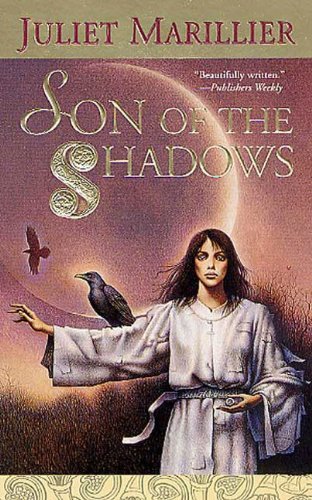


4.Echo North by Joanna Ruth Mayer, 4/5 stars. This was an enjoyable YA fantasy, and a good blend of fairytales I really enjoy. I don't read a lot of YA anymore, but this reminded me of some of the 'older' YA that is really good. East of the Sun West of the Moon, batb, cupid & psyche retellings all blended together. The author also credits Robin McKinley, DWJ, and Edith Pattou as big inspirations, and I could tell. YA fantasy
5.Last Argument of Kings (First Law 3) by Joe Abercrombie, ?/5 stars. I honestly was so done reading this trilogy, and just wanted to know how it ended so I could just finish it. I skimmed most of it, and only read the Glokta chapters and the ending. This type of fantasy is 100% not for me. I only finished the series because my brother gifted me the boxed set (and he read them). Adult fantasy
6.I Who Have Never Known Men by Jacquline Harpman, 5/5 stars. This is a lesser known classic that's gotten some popularity recently. It's part dystopian, part science fiction, and reminded me a little of The Wall which I read earlier this year. Very poignant, dark, but an exploration of self and a woman on her own. This is translated from French!
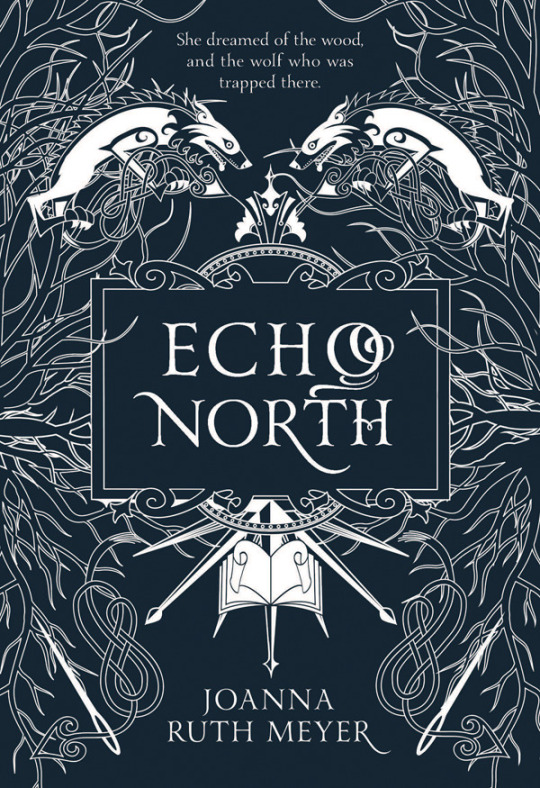
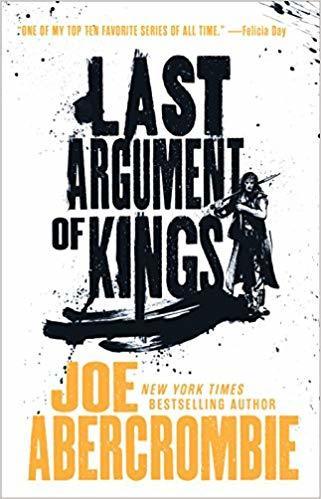
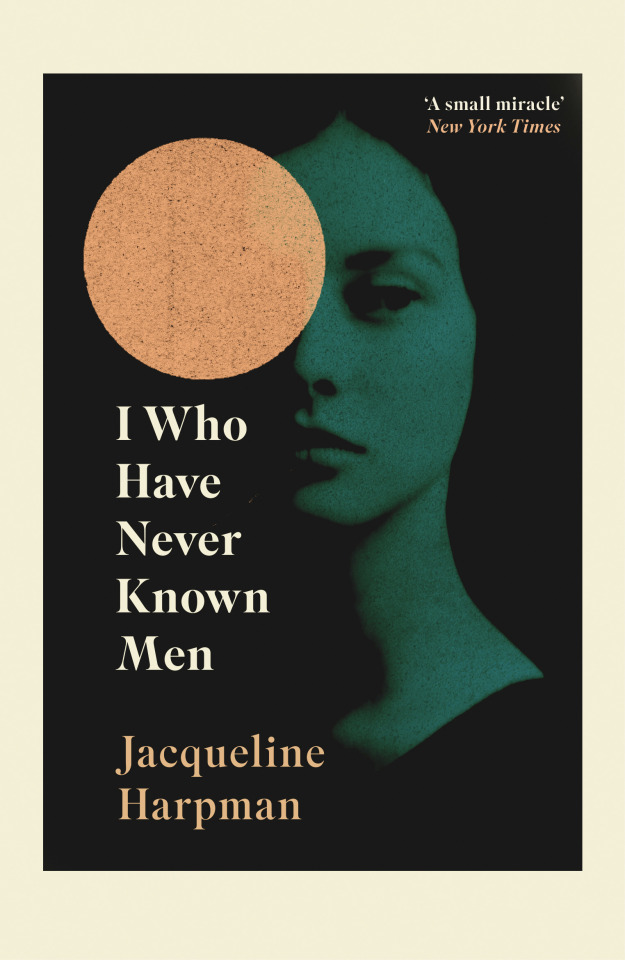
7.A Sorceress Comes to Call by T. Kingfisher, 4/5 stars. Another good T Kingfisher fairy tale retelling (however this was quite loose on the retelling), but also dark, featuring child abuse and animal horror. But there is humor, and a good cast of adult characters trying to fix the situation, and I like how T Kingfisher writes competent adults.
8.Witch Week (Chrestomanci 3) by Diana Wynne Jones, 3/5 stars. I started this on audio, but finished with the physical book. Can't say I enjoyed this one as much as the first two. This just reminded me of how horrible middle school was! A good halloween time read though. Middle grade fantasy.

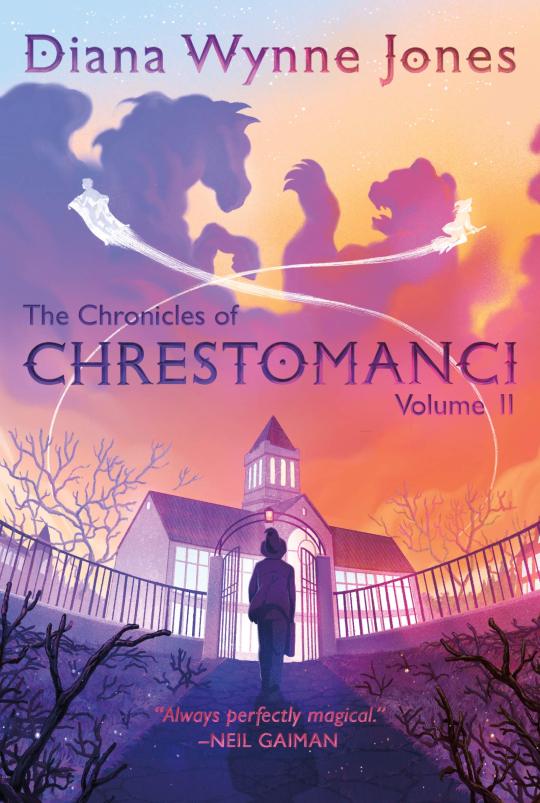
9.The Wolf in the Whale by Jordanna Max Brodsky, 4/5 stars. This is a historical fantasy that has been on my tbr since 2019. This is light on the fantasy elements, and about first contact between Inuit and Vikings in present-day Canada about 1000 years ago. Our main character is an Inuit shaman, and they and a viking have to team up to save the land and their peoples. Super detail rich and well written.
10. Graveyard Shift by ML Rio, 4/5 stars. A good read for Halloween, and excited to see that ML Rio is publishing again! A thriller about 5 people trying to discover who made a new grave in an abandoned graveyard. As someone who works in academia, I liked the academia element in this story, I only wish it was longer!
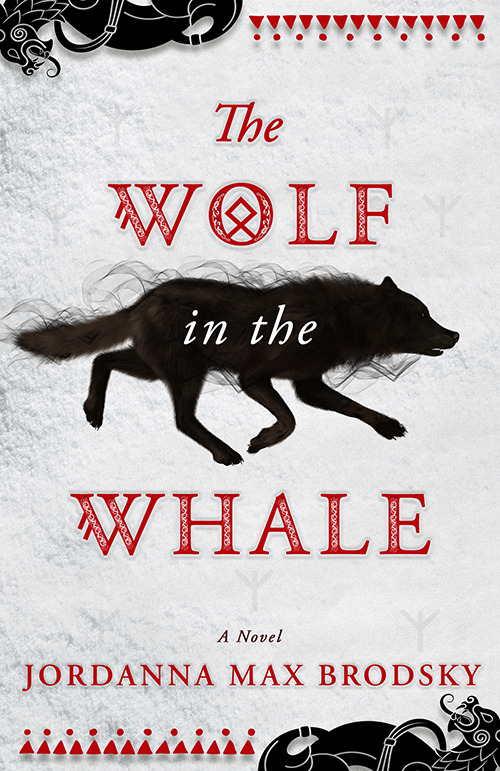
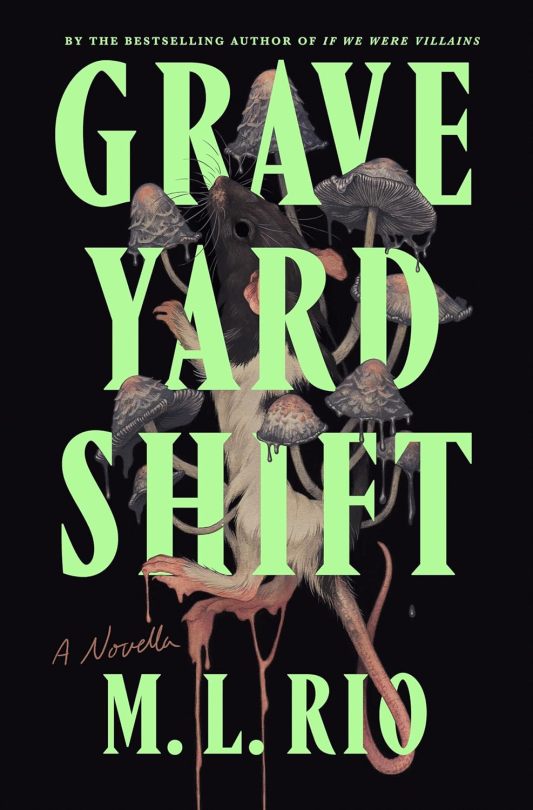
I'm on track to finish my Goodreads Reading Challenge this year, which is 80 books. Usually I get somewhere in the 90s, but not this year I guess. For Nov and December, I'm planning on finishing the Sevenwaters series, and Chrestomanci, so I'll be prioritizing those books.
November tbr:
The Scorpio Races (reread on audio)
Child of the Prophecy (Sevenwaters 3)
Heir to Sevenwaters (Sevenwaters 4)
Chrestomanci: The Magicians of Caprona (book 4)
Paladin's Fate (Saint of Steel 4)
Nonfiction
The Word for Woman is Wilderness
Cape Cod (on audio?)
The Virgin in the Garden
#october reading wrap up#reading wrap up#son of the shadows#sevenwaters#juliet marillier#saint of steel#t kingfisher#echo north#joanna ruth meyer#last argument of kings#first law#i who have never known men#a sorceress comes to call#chrestomanci#the wolf in the whale#graveyard shift#ml rio
28 notes
·
View notes
Text
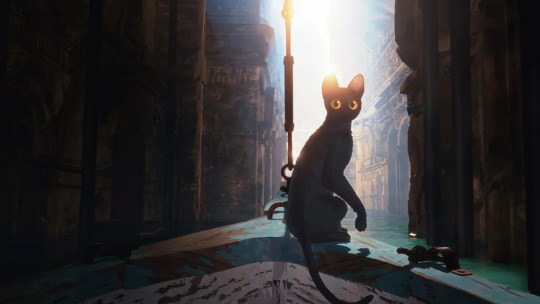
NOTE: Thanks goes to the 2024 Animation is Film Festival in Los Angeles for their screening of Flow this last October.
Flow (2024, Latvia/Belgium/France)
In modern animated movies, audiences expect that any animals that show up to be as sassy as the big-name actor that invariably portrays them. The idea of depicting animals in de-anthropomorphized ways or having them express only animalistic wants and needs have, for decades, been out of fashion (if they ever were). To portray animals in nature, as they are or might be, is not a concern to the major American animation studios. But it is the concern in Gints Zilbalodis’ feature film, Flow (Straume in the original Latvian). Produced by a patchwork of Latvian, Belgian, French, and other studios across the European Union, this is Zilbalodis’ second feature, after Away (2019). Animation in Europe, with Comcast-owned Illumination (France) and maybe Aardman (United Kingdom) as exceptions, remains a thoroughly unprofitable and infeasible venture without the collaboration of partner studios across the continent and subsidies from various E.U. governments.
Through the animals found in Flow – and especially the black cat via whom we experience the film’s narrative – Zilbalodis relates to the audience how difficult and, ultimately, rewarding it can be in learning how to trust and work with others. That trust, in turn, enriches one’s own life. The animals of Flow embody these themes while remaining simply animals. Other the occasional anthropomorphized behavior, the cat and their companions (no names, no genders) are what you expect them to be. There is refreshingly zero dialogue in Flow (excitedly, that makes it two fantastic no-dialogue animated films for me this year), allowing for a rare instance in which a 2020s film can easily cut across geographic, linguistic, and age barriers. Speaking of age barriers, Flow dissolves any notion that animation is simply a children’s medium. This is a film that a viewer of any age can enjoy; children and adults will both take something very different away from one of the most remarkable animated features of the year.
Nature has reclaimed the ruined vestiges of humanity – present nowhere in a waterlogged world. On a forested hilltop in a wooden cottage lives a black cat, surrounded by wooden carvings of cats and an enormous statue of a cat that looms over the residence. The cat has just had a testy exchange with several dogs and is resting one evening when they notice that the water is rising dangerously fast. Sprinting to the largest cat statue, the cat notices that water is fast consuming almost all of the land as far as their eyes can see. In a stroke of good fortune, the cat hops onto a passing boat just as the statue becomes completely engulfed in water. Already sailing this new high sea is a well-mannered capybara, who we find out has already learned how to steer the boat. On this journey of survival, the cat and capybara will pick up other passengers: a towering secretary bird, a kleptomaniac lemur, and a Labrador Retriever who always wants to play, no matter the situation. Our central quintet will encounter other animals along their travels: those who wish to be left alone, others who might want to join them on this journey without destination, and others who help in their own way.
Key to immersing oneself into Flow’s measured pace is to not look for answers where the film has none. When Flow made its North American West Coast premiere at the Animation is Film Festival in Los Angeles, Zilbalodis claimed he “did not care to explain” the exact reasons for humanity’s complete absence from Earth. Without exposition, Flow is, at a basic level, a depiction of animals contending with the whims of nature. Beyond this, the film is ripe for interpretation – one could even argue that the narrative of Flow itself exists only for its own sake. There are several hints that the dramatic water level rises have been occurring for some time, and only now is it reaching the elevation where it concerns the cat. The closing minutes of Flow leave the fates of each character ambiguous. Credit to Zilbalodis and co-screenwriter and co-producer Matiss Kaza for trusting the audience’s intelligence here.
Between those moments, each of the animals – the cat, the capybara, the secretary bird, the lemur, the Labrador Retriever – all grow, to different extents, to cast aside their selfishness and to assist the others in the boat. As long as they travel together, their lives are inextricably tied to that of the group. Because the cat is the film’s main character, the cat’s personal growth is most apparent. Aloof early on, implicitly used to some sort of indulgent lifestyle, and clearly annoyed by the nonsense of the lemur and the Labrador Retriever, the cat learns to fend for themself, to not depend on the odd bit of charity from the capybara or the secretary bird for food. In a colorful montage where the cat teaches themself to hunt while swimming, it initially appears that the cat will catch the fish just for one. Who would blame the cat after eating only a few bananas on this voyage? Instead, in respect to the secretary bird – who alternates with the capybara in steering the boat and who defended the cat earlier in the film from harm – the cat shares some of the aquatic bounty with them, as well as the Labrador Retriever.
There are perilous scenes that more dramatically depict the growth of each of our central quintet. In the sum of Flow’s dramatic and its quotidian moments, all of the animals – separated from others of their own species who might better understand them, with only a few feet of wooden planks separating them utter desolation – embrace the things that are essential. Eventually, they set aside their pride, material desires, and perhaps their own wellbeing to ensure the safety of the others. All of this is shown through their actions, in ways that will be understandable to audiences across cultures and time. Flow is a deceptively simple film when examining it solely through its story. Its complexities appear when one understands how difficult it is for a group of different-minded individuals to come to a mutual understanding for their own survival, let alone members of different animal species.
Made for less than $4 million in 2024’s USD (for contemporary comparison, The Wild Robot cost $78 million, Inside Out 2 at $200 million), Flow contains animation that belies its fractional budget. Animated using the open-source tool Blender, Zilbalodis’ team had to use some shortcuts in animating. The backgrounds, lush as they appear, are not always as detailed as they seem to be. If a scene does not have the animals move into the recesses of the background, Zilbalodis and his animators choose to leave the foliage as a blur, giving an impression of depth where there is none (see: draw distances of vistas in open-world video games as a counterexample). One can even glimpse a faint brushstroke among the trees and stone columns that dot the landscape – imperfections that remain in the film intentionally. The human infrastructure – or what remains of it – that appears is similarly not as detailed as one might think at first. The architectural styles seen within make no geographic sense, ranging from vaguely Venetian to Himalayan.
The human attention and processing power of Flow’s animation instead goes into its character animation and water effects – the latter was the responsibility of exactly two animators. So too the incredible sound design by Gurwal Coïc-Gallas (2017’s Valerian and the City of a Thousand Planets, 2023’s Sirocco and the Kingdom of the Winds). Flow’s character animation and its animal acting is the animated marvel of this production. Zilbalodis, who had a cat himself during his secondary school years, based the cat’s behavior on that cat. In interviews, Zilbalodis has described his film as, “not… copying nature, [but] interpreting it and creating a performance.” Granted, each of the animals in Flow behaves how you might expect them to in nature. But, like its spiritual predecessors in Bambi (1942) and Watership Down (1978), Flow necessarily injects a level of anthropomorphizing. Nevertheless, Flow – even with some humanizing (especially in some of the facial expressions) of the animals – feels as shorn of anthropomorphizing as one could expect in an animated movie. Too often in major animation studio films, there is a slickness and rubbery texture to character and background animation that, after a few minutes, loses its personality. Flow, in its imperfections and attentive animal acting, might be CGI-animated, but its craft always feels human.
youtube
Like his first film Away, Gints Zilbalodis does much of the work beyond directing and cowriting. Zilbalodis is also co-producer, cinematographer, editor, art director, and co-composer (along with Rihards Zaļupe). During the production of Flow, Zilbalodis also learned, like the animals in this film, to learn how to ask for help and to be a better collaborator. Zilbalodis, who also composed the music for Away, had to call in Rihards Zaļupe because he was having difficulty in directing the emotional contours of Flow’s score. Like the score to Away, Flow’s score is largely an ambient experience, with few melodic throughlines – this is a score meant only to accompany the film, not to help in the storytelling. Zaļupe, a professional composer, brought in a full orchestra to help Zilbalodis – gifting the film rapturous cues such as “Flow Away”. Other times, such as when the animals enter the Venetian-like city, Zilbalodis and Zaļupe’s score crescendos and layers the orchestra, only for no apparent reason on-screen and within the score itself. Zilbalodis was correct in calling in a professional composer to assist him on the music, but this is a score of someone who needs to learn that a film score can be more than just textural.
Gints Zilbalodis has noted that Flow was not truly influenced by cinema or any other works of art (other than maybe the comedic timing of silent film stars like Buster Keaton). It is a film that comes almost purely from dreams, sometimes adopting the logic of dreams. Too many modern filmmakers, forgetting that cinema is principally a visual medium, over-rely on dialogue to move a story or characterizations forward. Flow is a necessary reminder that, in film, visual storytelling comes before anything else – not the dialogue, nor messaging. It is a remarkable sophomore directorial effort from Zilbalodis – one that elevates his standing beyond animation diehards. Flow is also a breathtaking statement of animation’s power, its primordial closeness to the dawn of cinema, and what one can achieve when we genuinely try to understand the plights of others.
My rating: 9/10
^ Based on my personal imdb rating. My interpretation of that ratings system can be found in the “Ratings system” page on my blog. Half-points are always rounded down.
For more of my reviews tagged “My Movie Odyssey”, check out the tag of the same name on my blog.
23 notes
·
View notes
Note
hello, do you have any videos or youtube channels recs to learn more about being intersex (that touch on any topic)? if you do, tysm!
I do, thank you for asking! I apologize that many of these are not closed captioned in advance, but I've compiled a playlist of SOME videos that I've seen online. I would like to add some clarification, though. Many forms of media that are available will use the derogatory word, "hermaphrodite", to describe intersex people. Due to its extensive history in medical pathologization, it is considered a slur and should not be used by perisex (non-intersex) people. Reclaimed usage of the term (similar to slurs reclaimed by the queer community) is only reserved for intersex people due to said history. However, medical contexts continue to use it as a diagnostic label, so many intersex people must use it when trying to receive affirming healthcare.
As a result, it's important to be aware of this information when many forms of media, both old and new, contain the usage of this word.
While the word is genuinely relevant for discussions of animal and plant biology, it does not accurately describe the anatomy of intersex people. Unlike animals and plants, human beings--whether perisex or intersex--are generally not capable of having two different sets of fully functioning reproductive anatomy. Sex (for humans) is a bimodal spectrum, and is not a binary. As such, bodies can look many different ways due to innate variations of sex characteristics!
Now, I'll highlight a few specific videos in particular below:
A 2016 TedxTalk by an important intersex scholar, Dr. Georgiann Davis. She has written dozens of extremely important publications over the past decade! Here is a 2011 publication and a 2015 publication discussing the pathological medicalization of intersex people , and a 2016 publication that additionally describes the medicalization of trans experiences.
Emily Quinn's 2018 TedxTalk and her 2018 Ted WOMEN presentation (the second one is captioned). She also has a YouTube channel!
Pidgeon Pagonis has a YouTube channel, and they have been featured in several different interviews across the years during their ongoing advocacy work. They have a 2019 documentary about their experiences, and they have a website.
Here is an archived video from 1997 of intersex people discussing their experiences with other intersex people at a gathering held by Intersex Society of North America, whose work is currently continued by interACT.
In collaboration with Human Rights Watch, interACT worked on a 2017 report and video to raise awareness of the harms of medically unnecessary surgeries performed on intersex children without fully informed consent. The video is captioned.
Activist Sean Saifa Wall has spoken extensively about his experiences on media platforms, and he is a co-founder of the Intersex Justice Project, which focuses on empowering Black and Brown intersex people in advocacy work.
There is a 90 minute documentary that was released in 2023 called Every Body, and it details the life experiences of three intersex people.
While not a video, there is also the personal experiences of intersex youth as documented in a 2023 doctoral research dissertation done in collaboration with interACT: “'Support the shit out of them:” Intersex emerging adults’ socialization experiences and recommendations for caregivers of an intersex child".
Overall, I hope this is suitable resource, and thank you again for the question!
43 notes
·
View notes
Text
Practice 1:
Assignment 2, Concept Art - Human and "Inhuman"
. Blog post 02
Here are some sketch analyses based on the interesting design points summarised in the previous blog.
A.Making the human organism grow like a plant

B.Integration of diverse organisms
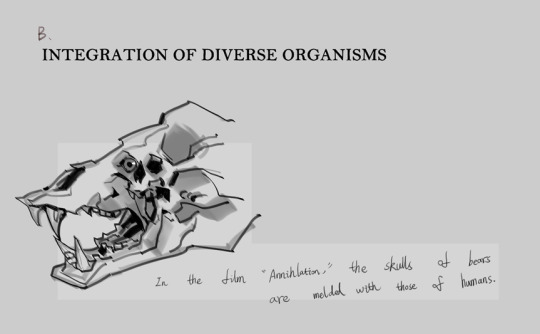
C.Use of shape language

D.The human figure and the Uncanny valley
Transformation process between human and inhuman

I'll be applying these interesting design points to my concept design.
My final design was inspired by the horrific creatures of the Cthulhu novel "The Shadow over Innsmouth" that were mutated by the local humans. These creatures are a combination of human and sea life.
My character has a graphic representation of the letter D, emphasising the tension of the character, with the two main design centres being the shoulders and the head, next to which I have placed directional 'octopus tentacles'.
shape language:

The character's toes are tangled together, giving it a twisted and awkward look.
final:
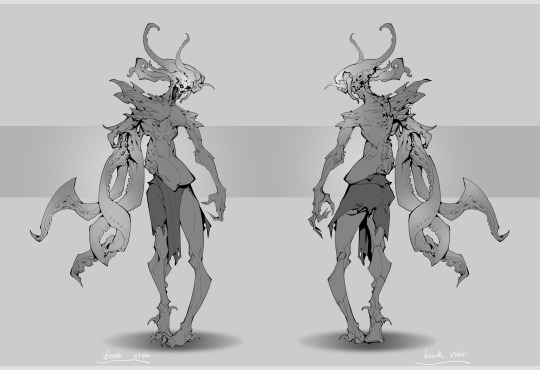
This is all for now, thanks for reading.
Reference:
Annihilation (2018) Directed by Alex Garland [psychological horror film]. United Kingdom United States : Paramount Pictures ( North America and China) Netflix (international).
Pan's Labyrinth (27 May 2006) Directed by Guillermo del Toro [dark fantasy film]. Warner Bros. Pictures.
Love, Death & Robots (March 15, 2019 – present) Directed by Tim Miller [adult animated anthology television series]. American : Netflix Studios.
The Last of Us (TV series) (January 15, 2023 – present) Directed by Craig Mazin Neil Druckmann Available at: HBO MAX (Accessed: 14 November 2023 ).
124 notes
·
View notes
Text

SUMMARY: The dead are coming back to life outside the isolated Mi'kmaq reserve of Red Crow, except for its Indigenous inhabitants who are strangely immune to the zombie plague.
The mod loves seeing Native American stories told by Native Americans (please watch Reservation Dogs) plus the themes that this movie is dealing with sets it apart from just a generic zombie film. This looks great and has for sure been added to the mod's watchlist.
#blood quantum (2019)#zombie#disease horror#2010s#canada#north american movie#mentionable warning#animal death#child death#racism#horror#movie#poll#more than 50% havent heard
66 notes
·
View notes
Text
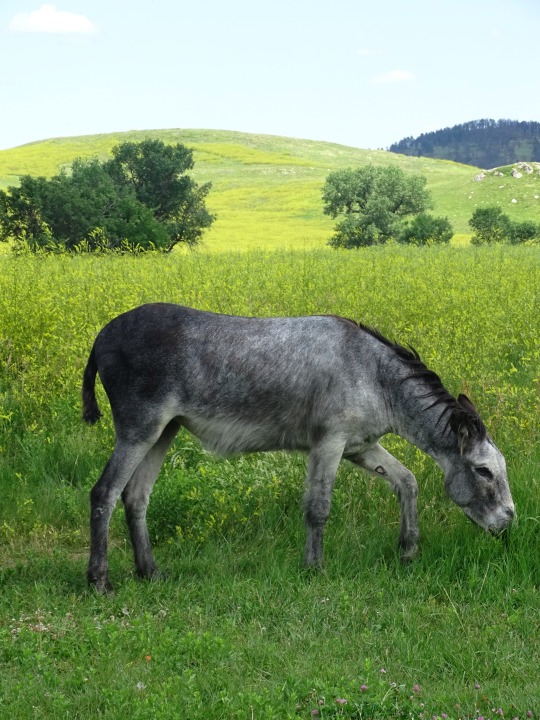
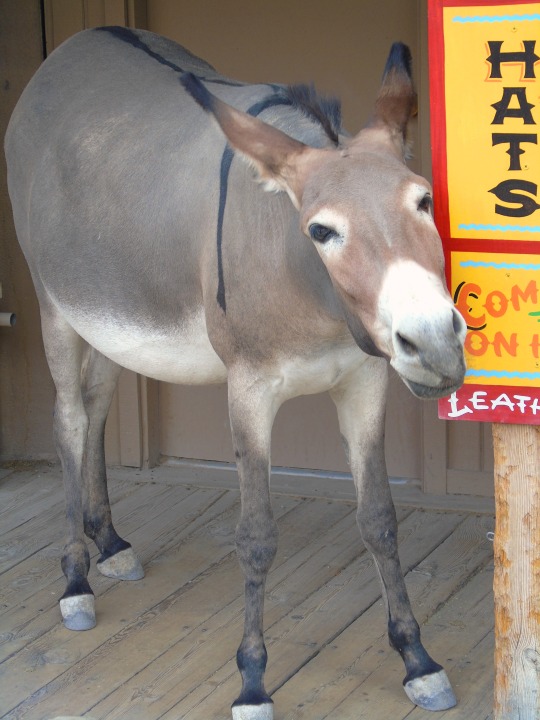
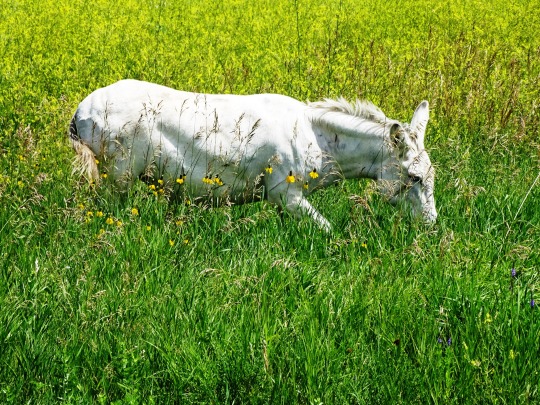

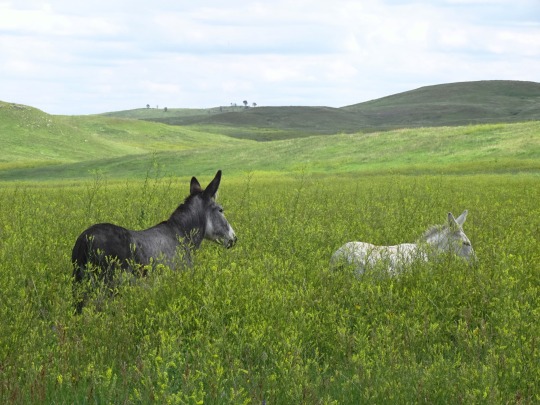
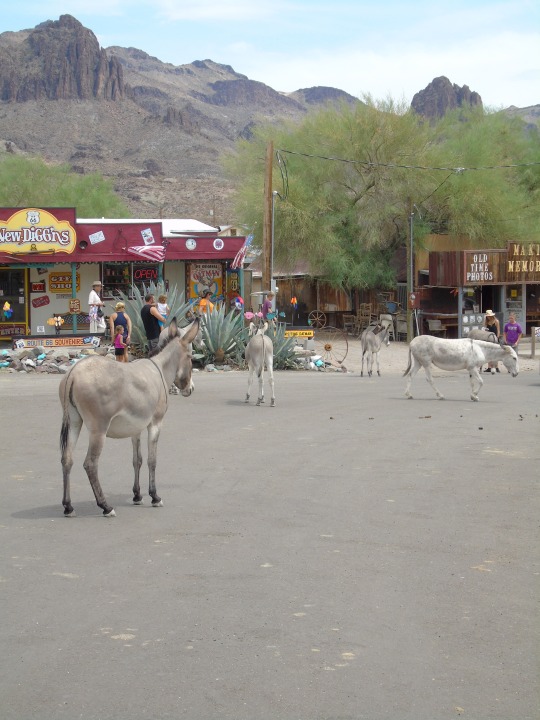
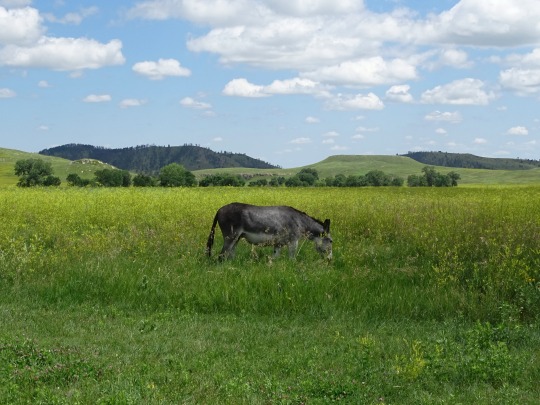
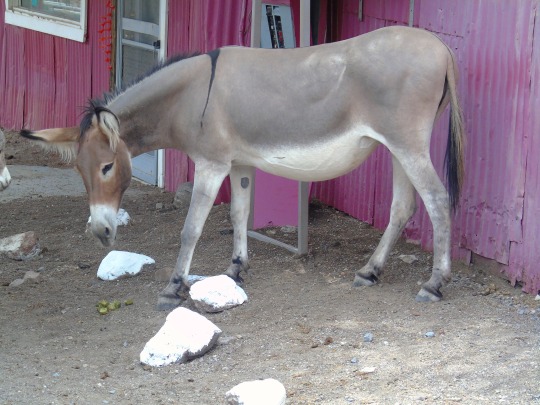

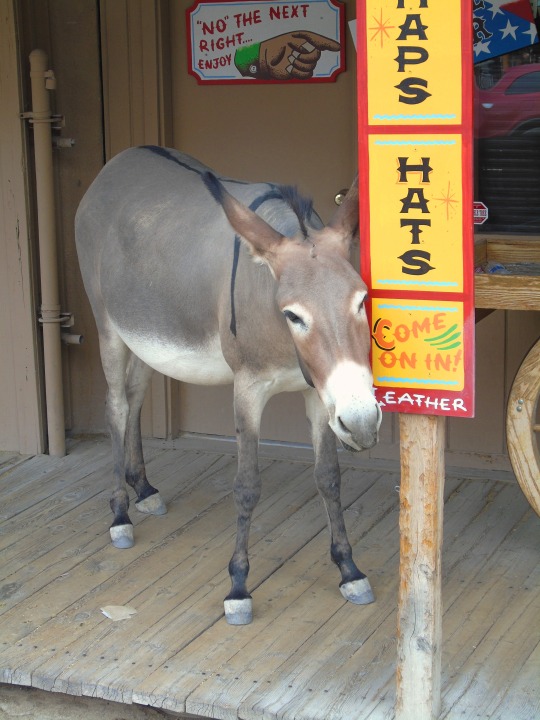
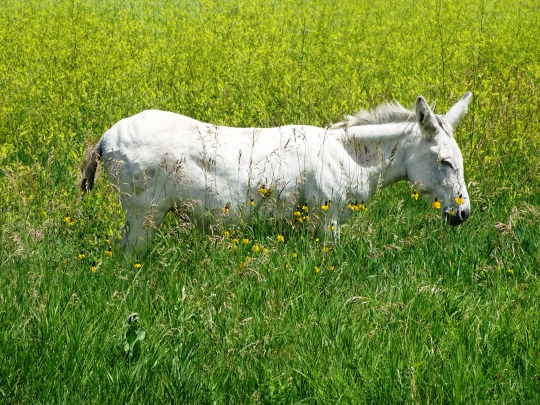

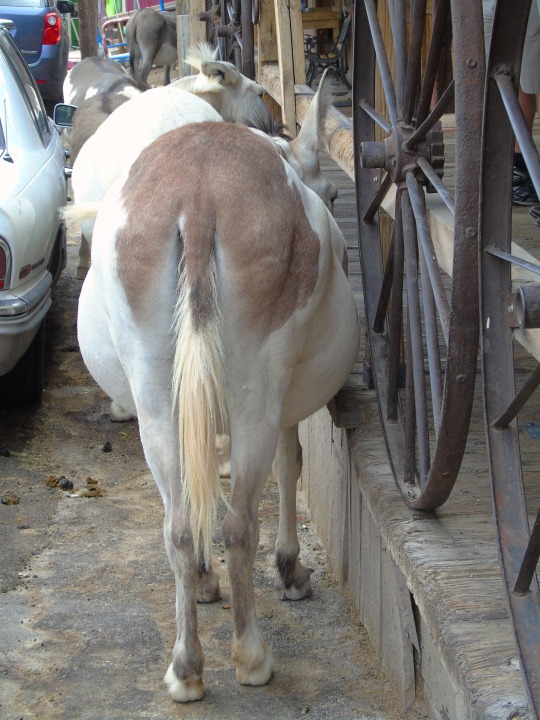
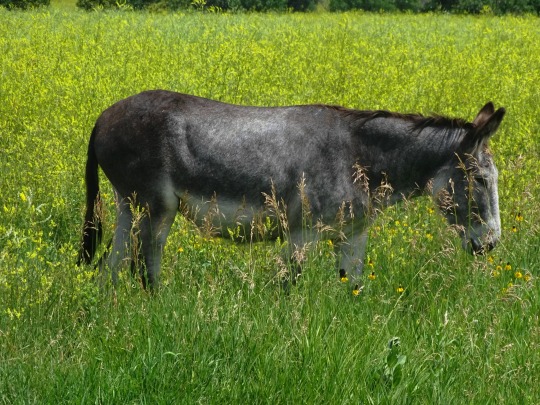
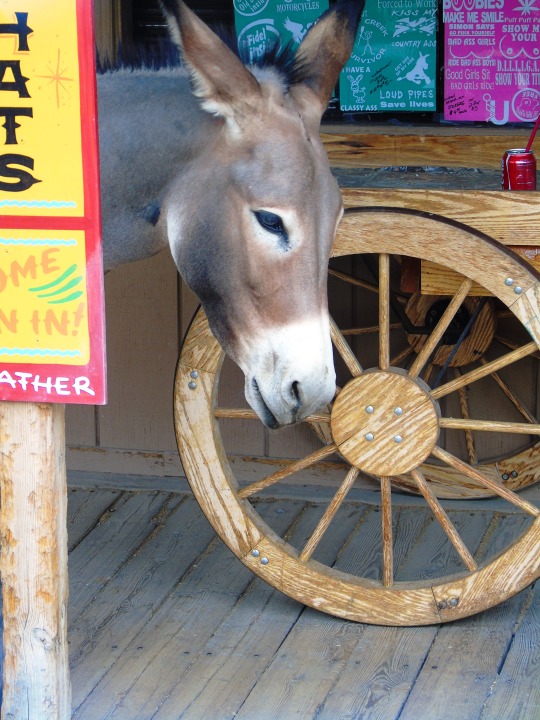
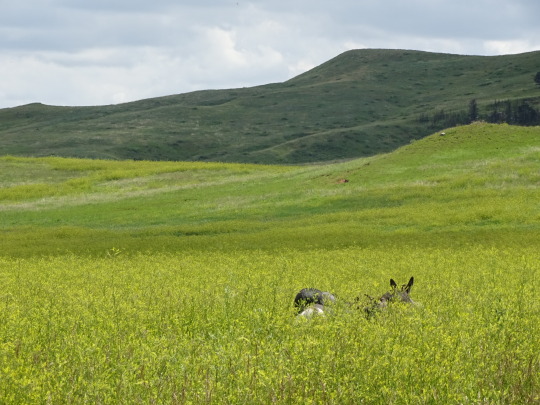

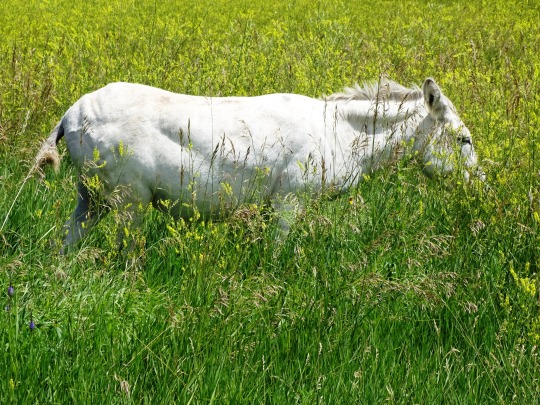
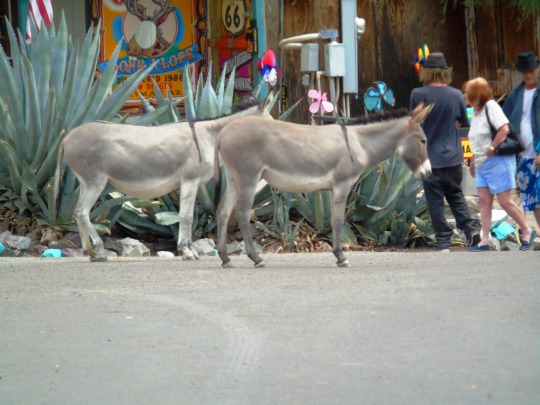
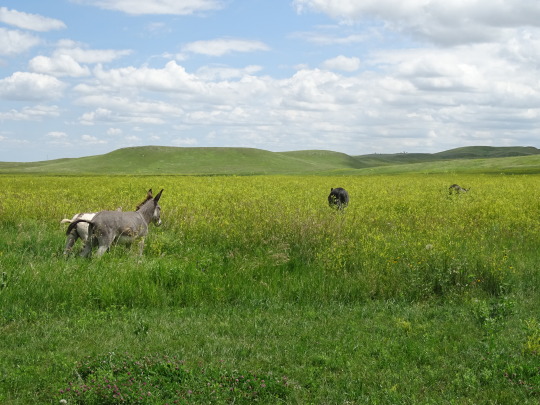
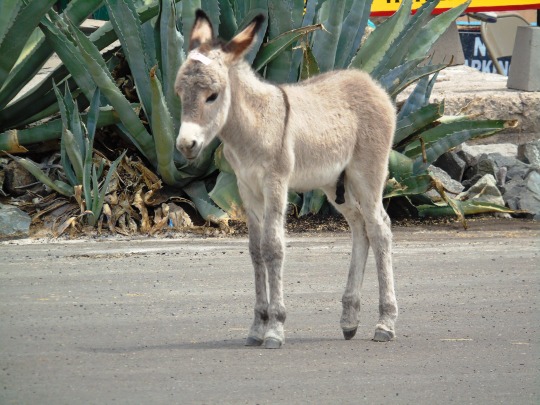
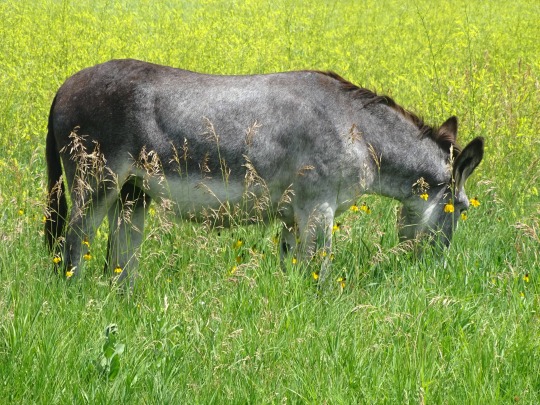
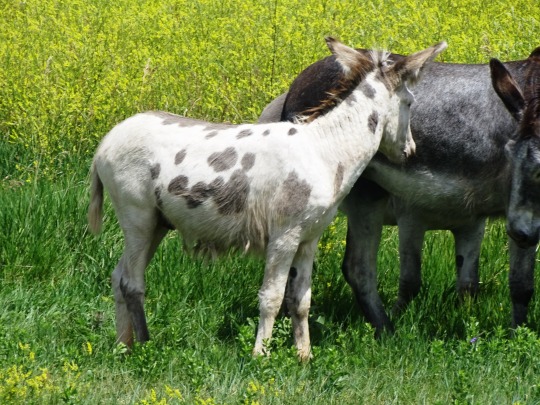

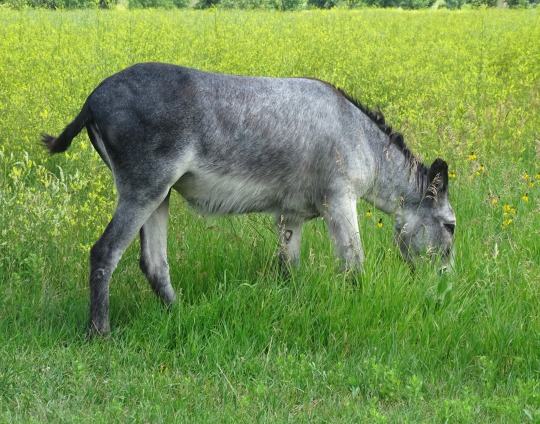
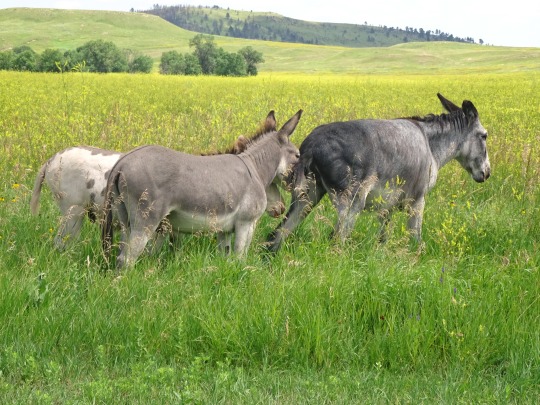
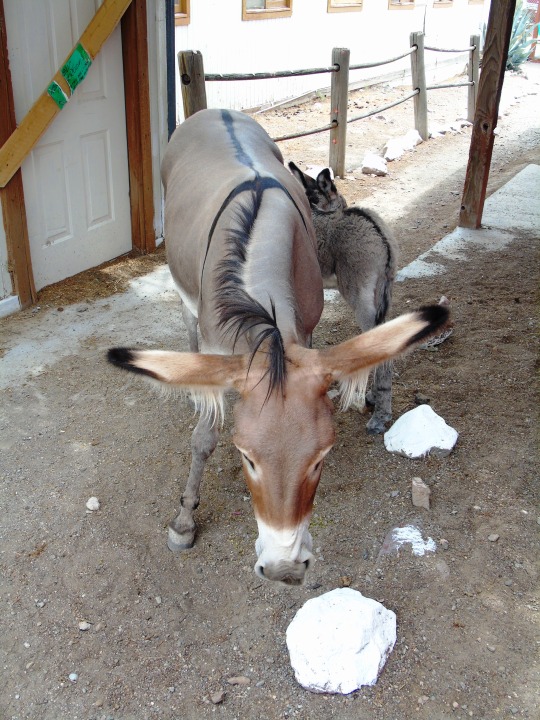
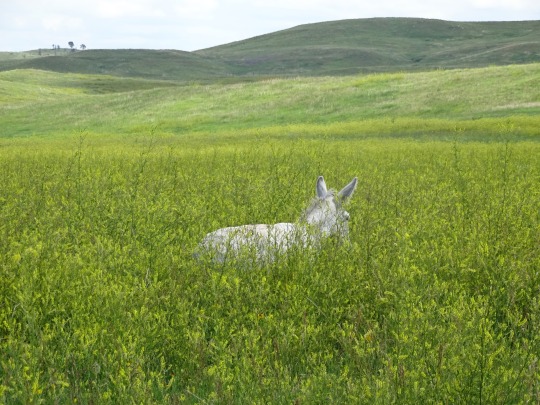
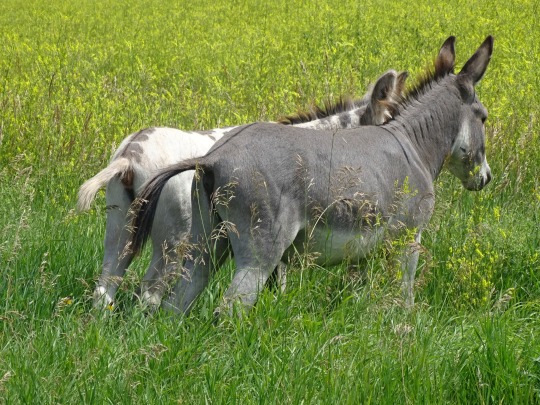
Feast of the Ass Day
The Feast of the Ass on January 14 began as a medieval Christian feast, and commemorates the Israelites’ flight into Egypt. It was predominantly observed in France as a variant of the Feast of Fools, which commemorated biblical donkey-related narratives, particularly the donkey that carried the Holy Family into Egypt following Jesus’ birth.
History of Feast of the Ass Day
This feast may be a Christian adaptation of the pagan feast, Cervulus, and incorporating the Nativity story’s donkey. It was first held in the 1000s and celebrated various Bible stories. Additionally, it had a pseudo-Augustinian influence credited to the ‘Sermo contra Judaeos.’
After the Catholic Church publicly condemned the celebration in the second half of the 15th century, it became less popular. The Feast of Fools was also condemned during this period. Both feasts were thought to be improper, albeit the Feast of Fools was regarded as such far more than the Feast of the Ass.
The Feast of the Ass honors all of the Bible’s donkeys, particularly the one thought to have transported Jesus and his family to Egypt following his birth. The family was escaping Herod the Great’s assassination of young boys at the time. The donkey that Jesus rode into Jerusalem on Palm Sunday is another biblical account of a donkey. A donkey is also said to have been present in the manger where Jesus was born.
A girl would ride a donkey through a town to a church on the day. As she rode through the streets, people would sing a song about her carrying a baby or being pregnant herself. Once the donkey reached the church, it was given food and water and stood near the altar for the service. The crowd would bray back to the priest, and the priest would occasionally bray as well. The Feast of the Ass was especially rowdy in the city of Beauvais in northern France.
Feast of the Ass Day timeline
4600–4000 B.C. The First Record of Domesticated Donkeys
In Egypt, donkeys are domesticated for the first time.
1000s The First Feast of the Ass Day
The first Feast of the Ass celebration is held.
1450s The Observance is Banned
The Feast of the Ass and the Feast of Fools’ celebrations cease because the Catholic Church denounces them.
1929 Miniature Donkeys Enter the United States
Miniature donkeys make their first appearance in the United States.
Feast of the Ass Day FAQs
What kind of donkey did Jesus ride?
A Nubian donkey. The Nubian donkey wears a cross on its back because it is believed that on Palm Sunday, this breed of donkeys brought Jesus to Jerusalem.
What does a donkey signify spiritually?
In ancient cultures, donkeys had a special symbolic and spiritual importance. Nevertheless, their link with Christ in the New Testament has led to them being viewed as a symbol of human suffering and our salvation hopes.
What characteristics do donkeys possess?
Donkeys, unlike horses, are not easily scared and have a great sense of curiosity. Donkeys are known for their defiance, however, this stems from their highly advanced sense of self-preservation.
How to Celebrate Feast of the Ass Day
Ride a donkey
Read up on the holiday’s history
Play donkey-themed games
On the off chance that you own one, why not take a ride to celebrate Feast of the Ass Day. Alternatively, you can visit the zoo to see one in the flesh.
Grab a Bible and learn about the story for yourself. Read the “Flight to Egypt” and surprise your friends with all the new information you’ve learned.
There’s no reason you can’t have fun while celebrating. You can host donkey-themed games, such as “Pin the Tail on the Donkey.”
5 Facts About Donkeys That Will Blow Your Mind
Few and then far between
Efficient beasts
Going the distance
Excellent vision
Powerful competition
Donkeys can significantly differ in size; they can be a mere 26-inches or as tall as 68-inches.
A donkey’s digestive system utilizes over 95% of what they consume.
In the desert, a donkey's bray carries about 60 miles.
Donkeys have the ability to see all four of their feet at once.
A donkey is more powerful than a horse of similar size.
Why We Love Feast of the Ass Day
We learn more about them
We’re animal lovers
Moving in high company
We get to learn more about donkeys and the role they played in popular Bible stories. Donkeys have an interesting history and we use this holiday to appreciate their versatility.
We love animals of all kinds. They make the world a more beautiful place to live in.
Donkeys were the transport mode of choice for the Messiah. That has to count for something, right?
Source
#Feast of the Ass#FeastOfTheAss#14 January#wildlife#animal#travel#begging burros#donkey#Custer State Park#I love Custer State Park#vacation#USA#summer 2019#2014#wildflower#original photography#South Dakota#North Central USA#Black Hills#Arizona#Southwestern USA#architecture#cityscape#small town#tourist attraction#landmark#big sky country#Oatman#landscape
3 notes
·
View notes
Text
Excerpt from this story from Mother Jones:
The North Cascades elk herd is a cluster of some 1,600 animals whose domain, like so many habitats, is riven by a highway. From 2012 to 2019, Washington state records show, at least 229 elk were killed by cars along a stretch of State Route 20 in the Skagit Valley. The situation imperils humans, too: In 2023, a motorist died after swerving around an elk into a telephone pole. “My own nephew had an elk collision, and I’ve nearly had collisions myself over the years,” said Scott Schuyler, a member of the Upper Skagit Indian Tribe, who is also the tribe’s natural resources and cultural policy representative. “We have an obligation to protect our neighbors and ourselves and these animals.”
To many observers, the solution has long been clear: a wildlife bridge, flanked by fencing. But building such a structure would cost around $8.5 million, a daunting expense. “There didn’t seem to be any money out there on the horizon that could make this happen,” said Jennifer Sevigny, a biologist with the nearby Stillaguamish Tribe of Indians, which co-manages the elk herd.
That changed in November 2021, when Congress passed the Bipartisan Infrastructure Law—a package that included the Wildlife Crossings Pilot Program (WCPP), a grant initiative that would distribute $350 million over five years to states, Native tribes and other entities for animal-friendly infrastructure. Although Sevigny knew the competition for grants would be fierce, she submitted a proposal for an elk bridge when the program launched in 2023. “Honestly, I didn’t think we were going to get it,” she said.
When the recipients of the first $110 million in grants were announced in December 2023, however, the Stillaguamish was among them. Once the grant agreement is finalized, the tribe will partner with the Upper Skagit to convene biologists and engineers to design the bridge, which is expected to take four years to construct.
The Skagit Valley overpass wasn’t the only tribal winner: Of the 10 Western wildlife crossing projects selected for the initial round of WCPP funding, four were Native-led. “It was really awesome to see that (experience) come to fruition,” said Shailyn Wiechman, connectivity coordinator at the Native American Fish and Wildlife Society and a member of the Chippewa-Cree Tribe of the Rocky Boy’s Indian Reservation. But tribal-led connectivity projects on and adjacent to reservations still face obstacles—and money remains a big one.
33 notes
·
View notes
Text
Interviews Regarding 456, and the possibility of AAI ports and AA7.
Recently, a bunch of interviews with the producer of the upcoming Ace Attorney 456 collection, Kenichi Hashimoto, have been released. Most of these are in Japanese, discussing various elements of the upcoming ports, including new features like the Orchestra Hall and Story Mode, but a few bring up some interesting future directions for the series, including the possibility of an AA4 anime or live-action drama, AAI2 ports, and AA7. As well, some discuss the influence of overseas sales on the current direction of the series.
**Please keep in mind that most of these interviews (with one exception) were originally in Japanese, and translated with google translate (with some possibly inaccurate modifications by me). As a result, the validity of the translation may be unreliable.**
From Gamer, regarding overseas fans and the increase in sales overseas:
--What kind of opinions and fan base do you get from overseas about the "Ace Attorney" series?
Hashimoto: The “Phoenix Wright: Ace Attorney Trilogy” was released in 2019, and the number of users and sales have increased significantly in regions such as North America, Europe, and Asia.
--With the exception of "Ace Attorney Investigations," I think all numbered titles in the "Ace Attorney" series can now be played on current consoles. Was this possible because of the great response to the Phoenix Wright: Ace Attorney Trilogy?
Hashimoto: Yes. As I mentioned earlier, it has been well received in North America, Europe, and Asia, and the number of users has increased, and of course there are people asking, "Why are 1, 2, and 3 available but not 4?" So I thought I had to do something about it.
Also, I wanted users to see games 4, 5, and 6, which are now playable on current consoles, so I was able to develop and release them. I think again that it is a very happy thing.
From this Famitsu Interview, regarding the future of the series:
--In 2023, there were musicals and readings of "The Great Ace Attorney", but I'm also curious about the future development of the "Ace Attorney" series.
Hashimoto: After the 20th anniversary of the Ace Attorney series, I would like to prepare various things for the 25th anniversary. The same goes for orchestral concerts, and I'd also like to do plays, musicals, and anime.
The TV anime was made up to season 2 with Phoenix Wright as the main character, but Apollo has not appeared yet, and since it is a courtroom story, a live-action drama seems interesting.
-- Since ``Ace Attorney'' was made into a movie once, there is a possibility of a live-action drama as well.
Hashimoto: That's right. However, it's not like my dreams will come true right away... I hope all the fans of "Ace Attorney'' can look forward to it while imagining the various possibilities in the future.
From IGN Japan:
--What are your plans for the future of the series? Could you please tell me about the possibility of ports of the "Ace Attorney Investigations" series, or another mainline entry?
Unfortunately, as far as I can tell you, there is nothing. However, we have no intention of ending the "Ace Attorney" series here, and we would like to see the series grow older, reaching its 25th anniversary in 2026 and its 30th anniversary in 2031. I don't know when or what I'll be able to announce, but please stay tuned for more information.
--If there were to be a new work such as ``Ace Attorney 7,'' what kind of thing would you want?
It's difficult to balance making a work that fans of the series can enjoy while also making it a work that new players can enjoy, but it is necessary to have the charm that is common to the entire "Ace Attorney" series. This includes the story, the characters, the puzzles, the tempo. These four will be essential for "Ace Attorney."
And finally from Siliconera about the news I've been waiting my whole life for -- this interview was actually published in English!
With so many Ace Attorney collections out now and games released, how would you feel about an Ace Attorney Investigations: Miles Edgeworth collection that includes localization of the second game?
Hashimoto: The development team is aware that fans are hoping for this. Unfortunately, we have no announcements at this time.
Most of this is of course corporate speak of not being able to confirm or deny anything, but this is the closest we've gotten to confirmation that AAI2 might be localized so far. As well, it does sound like the series is doing well, particularly overseas, which is encouraging for people hoping for more. It definitely doesn't sound like they think the series is dead yet!
90 notes
·
View notes
Text




HELLOOOO..... IT'S MEEEEE
I like RAIN..COFFEE...CATS..AND....
╰( ・ ᗜ ・ )➝ BOOKS:
I usually read almost every genre of books..maybe not non-fiction...read two books found out not my cup of coffee...
I mostly enjoy reading fantasy,romance and crime thrillers...and recently have been digging into dystopian books a lot.
MY FAVOURITE BOOKS TILL NOW
KING OF WRATH
THE SECRET HISTORY
BOOK THIEF
THE CRUEL PRINCE TRILOGY
THE EMPYREAN SERIES
THE INHERITANCE GAMES
GOOD GIRL'S GUIDE TO MURDER
FINAL OFFER
ONE DARK WINDOW
HOW TO KILL MEN AND GET AWAY WITH IT
PRIDE AND PREJUDICE
EMMA
WELCOME TO HYUNAM-DONG BOOKSHOP
TENDER IS THE FLESH
ANIMAL FARM
╰( ・ ᗜ ・ )➝KPOP:
I got into K-pop back in 2019...KILL THIS LOVE BY BLACKPINK being my first song (actually Gangnam Style but when I heard it I had no idea it was k-pop )
I USED TO BE A MULTI STAN BUT NOW I DON'T THINK I CAN BE THAT WHEN MY ULT GROUP IS GAYTEEZ I MEAN... ATEEZ
GIRLGROUPS I STAN
TWICE
DREAMCATCHER
BLACKPINK
(G)- IDLE
As for Boy group.... it's
ATEEZ


I love everyone in Ateez...but might be a little too much HWA BIASED....(not my fault have you seen him)
ฅ/ᐠ ‧̫‧ ᐟ\ฅฅ/ᐠ ‧̫‧ ᐟ\ฅฅ/ᐠ ‧̫‧ ᐟ\ฅฅ/ᐠ ‧̫‧ ᐟ\ฅฅ/ᐠ ‧̫‧ ᐟ\ฅ
GROUPS I LIKE TO LISTEN AT CERTAIN TIMES :
SEVENTEEN
GOT7
STRAY KIDS
NCT
EVERGLOW
BABYMONSTER
AESPA
TXT
ITZY
KARD
ENHYPEN
KISS OF LIFE
OTHER ARTISTS WHOM I LIKE LISTENING TO ARE EMEI,NATALIE JANE,IU,XG,SOFIA ISELLA and few more whose name I can't just remember rn
╰( ・ ᗜ ・ )➝ MANHWA/MANGA/WEBTOON:
I have read quite a lot of manhwas compared to webtoons and manga My favourite manga would be MY DEAREST SELF WITH MALICE AFORETHOUGHT
FAVOURITE MANHWAS/WEBTOONS
BEWARE THE VILLAINESS
GET SCHOOLED
THE VILLAINESS TURNS THE HOURGLASS
SOLO LEVELING
I'M THE MAX LEVEL NEWBIE
DEATH IS THE ONLY ENDING FOR THE VILLAINESS
MY REASON TO DIE
PYRAMID GAME
PURPLE HYACINTH
MUSE ON FAME
THE PRINCESS IMPRINTS THE TRAITOR
SIGRID
LOVE ADVICE FROM THE DUKE OF HELL
I WILL BE THE MATRIARCH THIS TIME
ISN'T BEING A WICKED WOMAN MUCH BETTER
MY IN-LAWS ARE OBSESSED WITH ME
MATCH MADE IN HEAVEN BY CHANCE
COUPLE BREAKER
KILL THE VILLAINESS
MONSTER DUCHESS' ADOPTED DAUGHTER
A BUSINESS PROPOSAL
MANAGER KIM
HERO KILLER
YOUR THRONE
SECOND LIFE OF A TRASH PRINCESS
CHARMING THE DUKE OF NORTH
EMPEROR HUNT
RANDOM INFO: I am not allowed to watch kdramas...but I did watch few secretly..my favourite kdramas are A BUSINESS PROPOSAL...AND THE GLORY..
I also like watching anime...(now this I am very much allowed)...my favourite anime is probably A3! ACT! ADDICT!ACTORS!...I have lots of favourites...but if I had to choose it would be this.
I am a minor ...so creeps stay away!!!
Currently listening on loop:
☁︎︎*.☁︎︎*.☁︎︎*.☁︎︎*.☁︎︎*.☁︎︎*.☁︎︎*.☁︎︎*.☁︎︎*.☁︎︎*.☁︎︎*.☁︎︎
☁︎︎*.☁︎︎*.☁︎︎*.☁︎︎*.☁︎︎*.☁︎︎*.☁︎︎*.☁︎︎*.☁︎︎*.☁︎︎*.☁︎︎*.☁︎︎



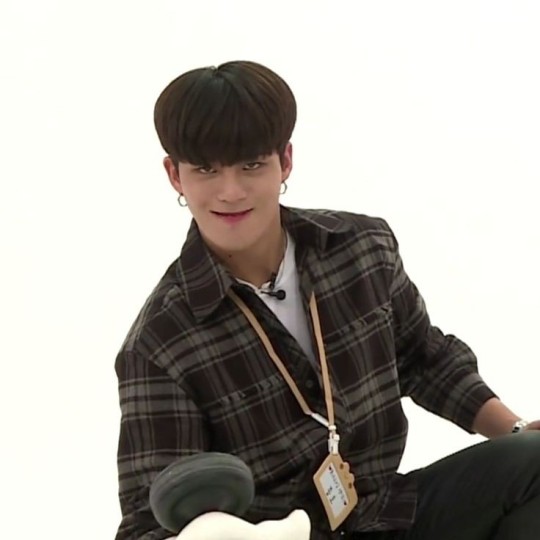
#intro post#hello everyone :)#welcome to my blog(∩ ∩)#nice to meet u!#am an atiny#Spotify#ateezinspo#why is the intro soo long???#atzblr
28 notes
·
View notes